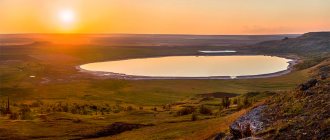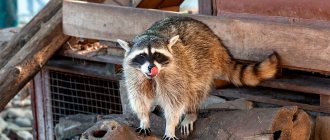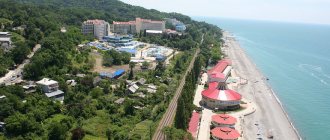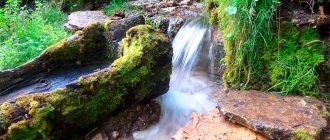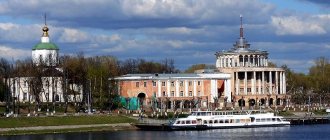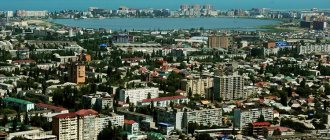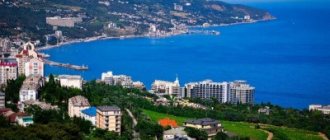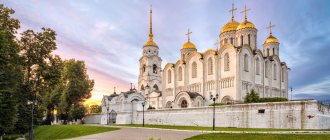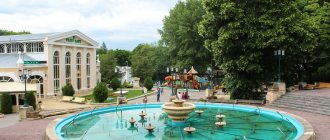Samara region is a region in the Middle Volga region. More than 3 million people live on its territory.
The Samara region joined Russia only in the 16th century - before that the land belonged to the Kazan and Astrakhan khanates. In the 17th-18th centuries people came here from all over the country, but there were also immigrants from other states - for example, Volga Germans.
During the Patriotic War, one of the centers of the defense industry was formed here: Il-2 was produced in Samara, Syzran oil provided the army with fuel, and the Volzhskaya Rokada, a railway that supplied Soviet troops, was immediately built.
The region is famous for Samarskaya Luka, a national park that contains many natural monuments, including the Zhigulevsky Nature Reserve. There are more than 3 thousand cultural sites, archaeological and historical monuments in the Samara region.
The author of the guide lives in Togliatti and himself went down to the Stone Bowl, took photographs at Garibaldi Castle, was at the Grushinsky festival and the Helicopter observation deck. He described important and interesting places in the area to help you plan your trip.
Cities and villages
Samara
Regional. The name comes from the river at the mouth of which it was built.
Guide to Samara
In 1935–1991 the city was called Kuibyshev - in honor of the statesman V.V. Kuibyshev. He actively contributed to the Bolsheviks coming to power in Samara during the October Revolution. During World War II, Kuibyshev was a reserve capital in case Moscow was captured.
After the World Cup in 2021, the city has blossomed and become cleaner.
Attractions:
- Samara embankment, 5 km long, begins in the historical part of the city. Here you can find: the sculptures “Barge Haulers on the Volga” and Sukhov from the film “White Sun of the Desert”, a monument to Prince Grigory Zasekin, a musical fountain, and a chapel named after St. Alexis.
- Kuibyshev Square is the largest square in Europe, on which there is a monument to Kuibyshev and the Samara Academic Opera and Ballet Theater.
- Stalin's bunker is a reserve shelter with steel doors at a depth of 37 meters for the government and the Commander-in-Chief himself during the Great Patriotic War.
- Samara Space Museum, where the Soyuz rocket stands in front of the facade. The exhibition includes satellites, prototype rockets and aircraft.
- Zhigulevsky brewery, built in 1881 by the Austrian Von Vacano. Here you can look at the industrial architecture of the 19th century and drink freshly brewed beer.
Tolyatti
Tolyatti is called the automobile capital because the famous AvtoVAZ is located here. With the advent of the plant, a lot has changed in the city: an area with wide avenues, green streets and constructivist architecture has appeared. The name also changed - before that it was called Stavropol.
Attractions:
- The local history museum tells about the history of the city: about old Stavropol, how it was flooded during the construction of a hydroelectric power station and how houses were moved to a new place, about the life of Volga peasants and archaeological artifacts found in the local soil.
- The AvtoVAZ Museum, where all production and experimental models created on the plant’s conveyors are located.
- The Sakharov Technical Museum is a field with an area of 38 hectares, dotted with various equipment: cars, helicopters, planes, armored personnel carriers. Here is the submarine B-307.
- Monument to V.V. Tatishchev, founder of Stavropol. The city was founded by him in 1737 for protection from nomads.
All the most important things you can’t miss in Tolyatti
Sizran
The city appeared at the end of the 16th century as an outpost for caravans. And, despite the big fire of 1906, Syzran has preserved many architectural monuments.
The most important thing to see in Syzran.
Attractions:
- The Syzran Kremlin is the only surviving Kremlin in the Samara region, consisting of the stone Spasskaya Tower. It was the entrance to the fortress, but later became a church.
- The Kazan Cathedral, which survived the fire of 1906, thanks to the church watchman.
- In the mansion where the exhibition hall of the Syzran Museum of Local Lore is located, lived the merchant Martinian Vasilyevich Chernukhin, who contributed to the speedy restoration of Syzran after the fire.
Zhigulevsk
A small town in the middle of the Zhiguli Mountains, which is where its name comes from. Zhigulevsk arose on the site of two villages - Otvazhnoe and Morkvashi.
The city began to be built by prisoners at the same time as the Zhigulevskaya hydroelectric power station - in the early 1950s.
Now Zhigulevsk is a city of power engineers, builders and oil workers.
It is closest to the natural monuments: Shiryaevsky adits, Samarskaya Luka and Stone Bowl.
Attractions:
- The Zhigulevskaya hydroelectric power station, built by prisoners in 7 years, is 52 meters high and 2.8 kilometers long.
- You can climb the Zhiguli Mountains: Mutova Gora, Shishka or Otvazhnaya - and from their peaks you can get a good look at the Samara Luka and the Volga.
- House-museum of I. E. Repin, a famous artist, in the village of Shiryaevo. In the Volga region he painted the painting “Barge Haulers on the Volga”.
Novokuibyshevsk
Novokuibyshevsk is a key city in the fuel and petrochemical industry of the Samara region.
On the site of the modern city was one of the estates of the Orlov counts, to whom Catherine II gave the Volga lands for their help in ascending the throne. During the civil war, battles between the Bolsheviks and the Czechoslovak Corps took place in this territory.
In 1946, construction of the largest oil refinery at that time began here. Novokuibyshevsk was originally an oil workers' village, but its location turned out to be so favorable that in 1952 it was transformed into a city.
Attractions:
- House of Valery Grushin. He lived here from 1957 until his death in '67.
- The Good Angel of Peace monument (similar ones are located in Moscow, Sochi, Pyongyang and other cities) with the carved inscription: “Keep and develop the traditions of the great philanthropists of Russia, philanthropists and virtues of the past and present.”
- Museum of the History of the City of Novokuybyshevsk, numbering 18 thousand exhibits.
Chapaevsk
The city is named after the famous commander V.I. Chapaev. At the beginning of the 20th century, one of the main explosives factories, Sergievsky, was built here. And before World War II, chemical weapons were produced there under an agreement with Germany.
Attractions:
- Monument to V.I. Chapaev.
- Singing fountain in front of the Chapaev monument. In the evenings it is accompanied by illumination and music.
- A local history museum containing exhibits of the revolutions of 1917, the Great Patriotic War and the history of chemical plants.
Otradny
Otradny is a city of oil and gas workers. It arose from a small village of the same name in the mid-twentieth century, when a large oil field, Mukhanovskoye, was discovered.
Attractions:
- monument to an oil worker;
- monument to the discoverers of Mukhanovskaya oil;
- a temple in honor of the great martyr and healer Panteleimon, crowned with 7 domes at the same time.
Racheisky Bor
One of the most beautiful places in the Samara region is located near the village. Old Racheyka in the Syzran region. Coordinates 53°22′42″ N. latitude, 47°59′01″ e. d.
Racheisky Bor occupies 1336 hectares in the forest-steppe, but is a natural taiga in southeast Russia. This is a unique natural anomaly. Bor is a dense pine and spruce forest where cranberries and blueberries grow in the swamps.
The natural diversity of the forest is impressive: about 400 species of plants grow there, and almost 90 species of birds come to nest. This amazing natural monument was taken under protection in 1983.
In the future, it is planned to create a natural park of the same name, which, in addition to the taiga forest, will include Racheyskie rocks, Mokhovoe and Uzilovo swamps, and the Semiklyuchye forest ravine. Visiting is free and not prohibited, provided that vacationers do not light fires.
When going by car on a summer trip around the Samara region, picturesque landscapes can be found both close to cities and near villages and towns. The beautiful places of the Samara region became a source of inspiration for I. Aivazovsky, F. Vasiliev, I. Repin: their canvases depicted the endless expanses of water, plains and mountains of the Middle Volga region.
Natural attractions
Zhigulevsky Nature Reserve and the Stone Bowl tract
Address: s. Bakhilova Polyana, st. Zhigulevskaya 1 Phone: 8 (84862) 3-78-38 Website: https://zhreserve.ru/ Opening hours: 08:00 - 17:00 Mon-Fri, lunch - 12:00 - 13:00, Sat-Sun — day off Cost: 50 rubles
The Zhigulevsky Nature Reserve is not part of Samarskaya Luka, but is located on its territory.
There are some plants here that grow only in Zhiguli: milkweed Zhiguli, kachim Zhiguli, kachim Yuzepchuk and sunflower Zhiguli.
In the reserve you can visit the Stone Bowl tract. The shape of the Shiryaevsky ravine resembles a bowl - hence the name.
It houses the holy spring of St. Nicholas the Wonderworker. It is believed that it heals diseases. Theoretically, there shouldn’t be a spring here - the local rocks are made of limestone, which absorbs water.
According to legend, there used to be a church in Shiryaevo in honor of St. Nicholas the Wonderworker, in which a priest and a sexton served. When the Tatar Horde attacked, the monks hid a precious cup from the church here. But soon they were caught and asked where the vessel was hidden. When the Tatar Khan found the cup, it flew out of his hands and rose into the sky. Since then, a source has appeared in this place.
Observation deck "Helicopter"
Address: Administrative, st. Vetvistaya, 1 Website: https://www.vertoletka63.ru/
Observation deck in the vicinity of Samara. It is located on a hill, and from here there is a view of the Volga, the Samara Luka and the Zhiguli Mountains.
In the past, the helicopter of the chief designer of SNTK named after him landed here. Kuznetsov, where the name came from.
Samarskaya Luka National Park
Coordinates: 53.341966, 49.366659 Telephone: 8 (84862) 2–14–95 Website: https://www.npsamluka.ru/ Opening hours: 08:00 - 17:00 Mon-Fri, lunch - 12:00 - 13: 00, Sat-Sun - day off Cost: 50 rubles How to get there: by public transport - minibus No. 168 from Zhigulevsk by car - along the M5, then turn towards the village of Zhiguli
The territory of the national park is 134 thousand hectares. It houses hundreds of species of plants and animals, some of them are listed in the Red Book: golden eagle, Apollo, South Russian tarantula, short-tailed snake eagle and marsh napkin.
Samarskaya Luka has many natural attractions:
- Valiant Kurgan,
- Maiden Mountain,
- Mount Camel,
- Hanging stone.
Tsarev Kurgan
Coordinates: 53.423337, 50.122675 Volzhsky
Many pilgrims climb to Tsarev Kurgan. From here you can see the Zhiguli Mountains and the Sok River.
There are many versions of the origin of the name, one of them is that Peter I was here during the Azov campaign. He also put a cross on the top of the mountain. Another legend says that the great commander Tamerlane feasted at the foot of the mound after his victory over Tokhtamysh in 1391. Another one is that the Tatar prince Mamaon is buried here.
Sites of Iron Age people with household items were found in the mountain. Stone was taken from Tsarev Kurgan for the construction of a railway bridge across the Volga.
Cave of the Greve Brothers
Coordinates: 53.325703, 50.195064 How to get there: by public transport - buses No. 50, No. 78, No. 79 and by minibus No. 113, No. 389, No. 392, No. 406, No. 447. Stop "Sorokin Khutora" by car - take the Volzhskoe highway and turn off in front of the village of Upravlencheskiy. Distance from Samara - 20 km
This is the longest cave in the Samara region. Sites of ancient people from the Bronze Age have been discovered here.
The cave was discovered by accident - pioneers stumbled upon it in 1964. But it got its name in honor of the real discoverers - the sons of the German pharmacist Greve, who left a large inscription “1904”.
The cave contains a complex labyrinth of passages, galleries and halls.
Blue Lake
Coordinates: 53.912469, 51.488080 How to get there: by public transport - intercity buses to the villages of Leninogorskoye, Klyavlinoe, Isakly, Kamyshly. Get off at the turn in Staroe Yakushina and walk 9 km by car - along the M-5 highway, turn towards the village of Staroe Yakushina, drive to it, then another 1.5 km to the lake. Distance from Samara - 120 km
Hydrogen sulfide enters the water from the depths of the earth - this is why the lake is turquoise in color and no one lives in it.
The water temperature is always 8°C - it does not freeze even in winter.
The lake has a funnel-shaped bottom and its depth is 50 meters. Therefore, people called him “bottomless.”
There is a legend that one Mongol khan, in order to measure the depth of the lake, forced prisoners to go down to the bottom. But none of them reached him.
Mount Svetelka
Coordinates: 53.373097, 49.097316 How to get there: by public transport - by intercity bus No. 568 to the village of Usolye by car - go to Moskovskoe highway, turn after Novosemeykino onto the M-5 highway to Usinsky, take the road P-227 and through the village of Muranka to Volzhsky Utes. Distance from Samara 225 km
They say that the mountain stands on a fault in geological plates, which makes it a “place of power.” Its white limestone peak is visible even at dusk. From here you can explore the Shigonsky district.
Previously, the mountain was called Karauln Hill, because there was a guard post of the Golden Horde here.
Racheisky Bor
Coordinates: 53.377590, 47.983632 How to get there: by car - along the M-5 highway to Staraya Racheika. Distance from Samara - 210 km
Racheisky Bor is a valuable natural monument of the Volga region with cranberry bogs and mossy pine forests. This is the only taiga forest in the southeast of the European part of the country.
Rare animals live here:
- burial ground;
- landrail;
- wryneck;
- fluff;
- peregrine falcon;
- wood lark.
Stone Bowl
The Stone Bowl is accessible to both motorists and hikers. You just need to obtain the appropriate permit or buy a ticket to visit after listening to the necessary instructions. It is better to visit here by car in the summer, but you can get there on foot at any time of the year from the village of Solnechnaya Polyana. Going down the slope into the Chalice, you will pass the Nikolsky spring, where you can get delicious water gushing straight from the rock. There is also a small chapel in honor of St. Nicholas, the World of the Lycian Wonderworker and benches for resting pilgrims and travelers.
The Stone Bowl has rich nature, the slopes around are covered with dense forest, and there is no mobile communication due to the mountains around. Amenities include a dumpster and toilets. Walking south along the Shiryaevsky ravine and turning your heads to the left, you will see the Bear Grotto and Fox Grottoes.
Parks, entertainment and more
Museum "Motorworld of Vyacheslav Sheyanov"
Address: Volzhsky district, Petra Dubrava village, st. Klimova, 2B Telephone: Website: https://motos-of-war.ru/ Opening hours: 09:00 – 19:00 Mon-Sun Cost: 500 rubles, 300 rubles - preferential How to get there: by public transport - from Samara by buses No. 123 and No. 480 to the Petra Dubrava stop by car - exit onto Moskovskoye Shosse, turn onto Rakitovskoye Shosse, pass Zubchaninovka, exit onto highway 36K-851, turn off in front of the village of Stroykeramika and get to Petra Dubrava
The museum complex has collected a unique collection of the Golden Age of motorcycle construction, which occurred in the 1930–1940s.
There are 1,800 types of motorcycles from 14 countries, including: the best models of BMW and Harley Davidson, the first mass-produced Soviet motorcycle L-300 and tricycles - three-wheeled, tracked combat vehicles.
At Sheyanov’s Motorcycle World, motorcycles are restored so that they are as good as new.
Here you can not only learn more about motorcycles, but also ride them.
Garibaldi Castle
Address: Khryashchevka village, Rechnoy lane, 8 Phone: Website: https://garibaldicastle.com Opening hours: 07:00 - 21:00 Mon-Sun Cost: free How to get there: by public transport - from Tolyatti - minibus No. 320 from the Park House shopping center stop to the Khrushchevka village stop
Dominating the otherwise ordinary village is a neo-Gothic style castle that incorporates architecture from the Middle Ages, Renaissance and Victorian eras. It began to be built in 2006.
The interior of the castle is still being restored, so you can only get inside by appointment for a photo shoot.
Grushinsky Festival
Coordinates: 53.472444, 49.908555 Phone: 8 (846)-332-66-90 Website: https://grushinka.ru/ Cost: free How to get there: by public train to the Valery Grushin platform by car - https://grushinka .ru/2015/06/opisanie-proezda-do-grushinskogo-festivalya Distance from Samara - 50 km
A well-known festival of art songs, which has been held since 1968 - a year after the death of Valery Grushin himself.
He was a student at the Kuibyshev Aviation Institute, composed songs and played the guitar. Grushin died saving drowning people.
Many performers perform at the festival every year, including: Oleg Mityaev, Galina Khomchik, Vadim and Valery Mishchuki, Konstantin Tarasov. The chairman of the jury is Alexander Gorodnitsky.
Center for Historical Modeling "Ancient World"
Coordinates: 52.898153, 49.987975 Phone: Website: www.drevnymir.ru Opening hours: 10:00 - 17:00 Sat-Sun, Mon-Fri - days off How to get there: by public - by bus No. 631 "Samara-Pestravka" to village of Kamenny Brod by car - https://drevnymir.ru/events/priglashaem-posetiteley-v-drevniy-mir/ Distance from Samara - 47 km
- both a museum and a tourist site. Here you can immerse yourself in the old days:
- shoot a bow;
- ride horses;
- visit a real forge and pottery;
- see reconstruction of the Bronze and Stone Ages.
There are also master classes in pottery, making glass beads, cube printing, and quests in which “tribes” compete with each other.
Round-the-world stop near Brusyan
Everyone who has ever visited the Zhigulevskaya round the world tour knows about this iconic place. After long journeys along the Volga, here the circumnavigators devote three whole days to rest - active and not so active.
The place is only available for visits for three days in the month of May, but what three days it is! A tent city for 600 people, musical equipment and a joyful atmosphere - you will find all this here.
Historical places
Bogatyrskaya Sloboda
Coordinates: 53.338349, 49.246638 Phone: Website: https://b-sloboda.ru/ Opening hours: 10:00 - 18:00 Mon-Sun Cost: 200 rubles for adults, 150 rubles for children, under 6 years old - free How to get there: by public - by boat from the river station of the Komsomolsky district of Tolyatti by car - https://b-sloboda.ru/kontakt.html Distance from Samara - 115 km
Bogatyrskaya Sloboda is an architectural complex created by Tolyatti artist Viktor Petrov. On its territory there are wooden huts, towers and idols.
Here you can dress in chain mail, fight with swords and throw axes. But the most important thing is to ride on boats along the Usa.
Adits in Shiryaevo
Coordinates: 53.419512, 50.005632 Opening hours: around the clock Cost: 50 rubles, children under 7 - free How to get there: by public transport - by intercity bus to the village of Shiryaevo by car - get to the village of Shiryaevo. Distance from Samara — 145 km
The best limestone in the province was mined in these adits - most of the pavements in the region were built from it. The adits were made at the beginning of the 20th century.
They have a complex and confusing system of tunnels, in which it is easy to get lost. Therefore, tourists are only allowed into some of them.
Wooden windmill in the village of Barinovka
Coordinates: 52.915610, 50.820342 Opening hours: around the clock Cost: free How to get there: by public transport - by intercity bus to the village of Barinovka by car - take the P226 highway, then turn onto the P224 highway and get to the Barinovka village. Distance from Samara - 70 km
The last surviving mill in the Samara region, built in 1848. The millstones of this mill were brought partly from the Urals, partly from France.
It served until the 1960s - it was even connected to an electric motor. In the 80s, the mill was officially recognized as a monument of ancient architecture.
Vegetable world
It is worth noting that the region is located in two zones: steppe and forest-steppe. That is why the plants of the Samara region are very diverse. Broad-leaved and coniferous forests, meadow steppes, floodplain meadows, swamps and peat bogs - each zone is distinguished by its own types of flora. It must be said that the forest cover of the region occupies a very small percentage (12). There are also rocky steppes here: they are found mainly on the slopes of the Zhiguli Mountains. Strong lighting coming from the chalk deposits, high water resistance and strong heat have become a real obstacle to the growth of many plants: only drought-resistant herbs survive here.
Churches, temples and cathedrals
Iversky Convent
Address: Samara, Volzhsky Ave., 1 Phone: Website: https://samara-iversk.cerkov.ru/ Opening hours: 07:30 - 20:00 Mon-Sun
The Iversky Convent was founded in 1850. It received its name because of the wishes of a merchant’s wife, who donated the family Iveron Icon of the Mother of God.
Under Soviet rule, most of the monastery was destroyed and its members were shot. In the Soviet Union, clubs were located here. But in the 90s, the monastery returned to the ownership of the Russian Orthodox Church.
Holy Mother of God Kazan Monastery in the village of Vinnovka
Address: Vinnovka, st. Kazachkova, 3 Phone: 8-964-975-25-08 Website: https://sbkmenmon.cerkov.ru Opening hours: 07:00 - 19:00 Mon-Sun
The monastery was built by the famous Samara architect Yuri Kharitonov, who built the Church of the Great Martyr George the Victorious in the center of Samara.
The monastery has a 47-meter bell tower in the form of a lighthouse and an extensive library. On its territory, archaeologists have discovered several Neolithic sites.
Sterlet fry are bred here and released into the Volga to restore the population.
Church in honor of the Icon of the Mother of God of Kazan in the village of Vinnovka
Address: Vinnovka, st. Kazachkova, 3A Phone: 8-964-975-25-08 Website: https://sbkmenmon.cerkov.ru Opening hours: 07:00 - 19:00 Mon-Sun
The first church was built in 1770, but burned down in a fire in 1839. In 1851 it was rebuilt again, only this time from stone.
In the 1930s, the authorities closed the temple, threw the bells into the river, bent the cross, and destroyed some of the icons. Later the church was restored.
Church in honor of the Baptism of the Lord in the village of Kurumoch
Address: Kurumoch, Lenin Ave., 1A Telephone: Website: https://volz-kurumosh.cerkov.ru/ Opening hours: 08:00 - 18:00 Mon-Sun
One of the few surviving pre-revolutionary churches in the Samara region. It was built in the style of Russian-Byzantine architecture.
During the Soviet period it was used as a workshop and warehouse. The church was restored and re-consecrated in honor of the Epiphany.
Holy Trinity Church and holy spring in the village of Tashla
Address: Tashla, Central St., 35 Phone: 8 (84862) 45-112 Website: https://tash-svtroizy.cerkov.ru/ Opening hours: 09:00 - 19:00 Mon-Sun
In the Holy Trinity Church there is an icon of the Mother of God “Deliverer from Troubles.”
According to legend, thanks to her a holy spring arose. One woman dreamed of the Mother of God, who pointed out where the icon lay. As soon as it was taken out, a source formed in the same place.
Museum-yurt "Murager"
In the Kinelsky district of the Samara region you can visit a one-of-a-kind monument of the cultural heritage of nomadic tribes. It is presented in the form of a richly decorated nomadic yurt, in which the spring festival called Kamal Ait is celebrated in March.
The skillfully handmade yurt dates back to the 19th century. Inside this monument, tourists can see the reconstructed life of an ancient Kazakh family. All necessary exhibits were collected by local residents. Anyone can attend the “Aul Clay Toy” master class.
Location: Bogdanovka village.
Beria's bunker
For tourist diggers, a visit to Beria’s bunker in Samara, which today is an abandoned building, will be very interesting.
The entrance to this very bunker is a dilapidated staircase. Local residents, fans of the so-called new youth hobby of digging or urban type, advise you to go down into the dungeon using specialized equipment, otherwise you can fall into cold water and die during the descent (its height is 30 meters).
In the basements, speleologists found many interesting things, among which the most interesting exhibit was “Enigma,” the world-famous encryption machine from the Second World War.
Dishes and furniture were also found in the bunker; a heat generator, elevator shafts, plumbing fixtures and air purifiers were installed there.
Monument to the Soldier's Mother
The Great Patriotic War did not spare a single Soviet family. Many women remained widows, many mothers did not live to see their sons. In the village of Alekseevka, a monument to the soldier’s mother, P. E. Volodichkina, was erected. All the men in this woman’s family died: her husband and six of her sons. The woman herself did not survive them for long. In the village, tourists can visit a museum dedicated to the Volodichkin family.
The monument is a special place where newlyweds, tourists and schoolchildren come.
